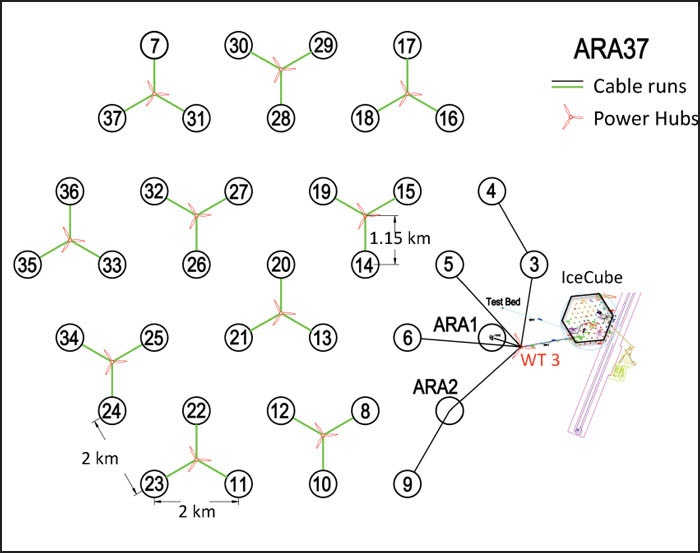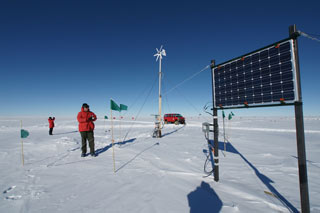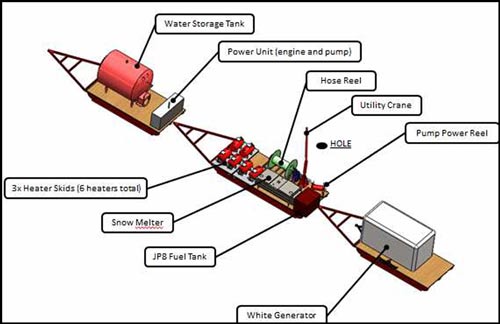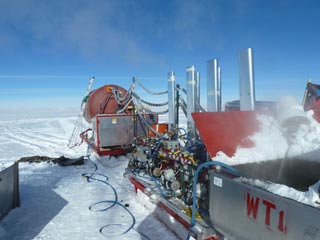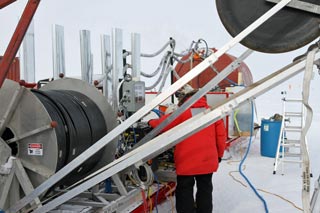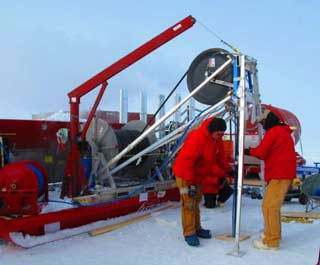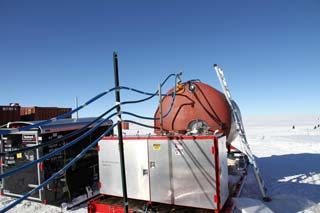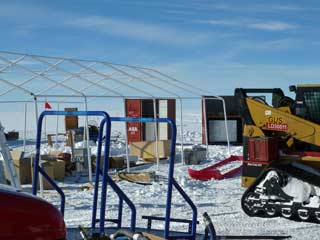2011-12 Photos - Askaryan Radio Array (ARA)
|
The first field season for ARA was in 2010-11 when various antennas and other test equipment was installed at the test bed site, and three different wind turbines and associated power/communications systems (which will be required at most of the superclusters) were installed (see my coverage for details). After review of the data collected (or not collected) during the 2011 winter, the main 2011-12 field activities focused on three areas: --inspection/evaluation of the various test bed components...including the temporary installation of an Aero6gen wind turbine directly above the test bed, to evaluate noise sensitivity --maintenance of the wind turbine components--including replacement of the failed Hummer turbine --full installation of the ARA1 station/antenna system | ||
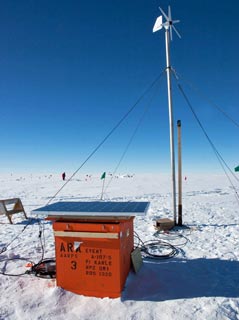 The Aero6gen unit (company info) was temporarily put up on a 20' tower; afterward the turbine was to be retrograded, and the tower sections were reused on the Whisper turbine at Site 2. In the foreground on the box is a 235W PV panel, not yet mounted (2). |
Here's the turbine from another angle, with the PV panel mounted on a tower. The PV installation is to test the control system as well as the erection and mounting methods; the 300w turbine is being operated in various modes to check for noise reception in the buried antennas. Also in this photo are Kara Hoffman (left) and Michael DuVernois (3). | |
|
Elsewhere, the three turbines were to be lowered and inspected. The Hummer turbine at site 2 was replaced with a Whisper unit on a new 30' tower (some of which was temporarily used for the Aerogen unit at the test bed. A replacement turbine was brought for the Bergey turbine at site 3, it was to be installed if needed. Otherwise there was maintenance, adjustments, and swapping of the control and instrumentation boxes. The turbines, PV panels, and associated equipment are not required for the first few antenna stations, which are close enough to the ICL to use station power and hard-wired data links. 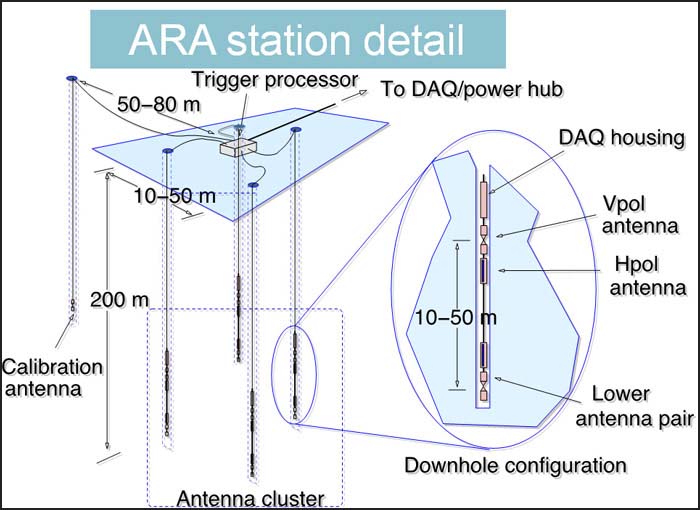 Above, the layout for each of the 37 planned clusters (4) 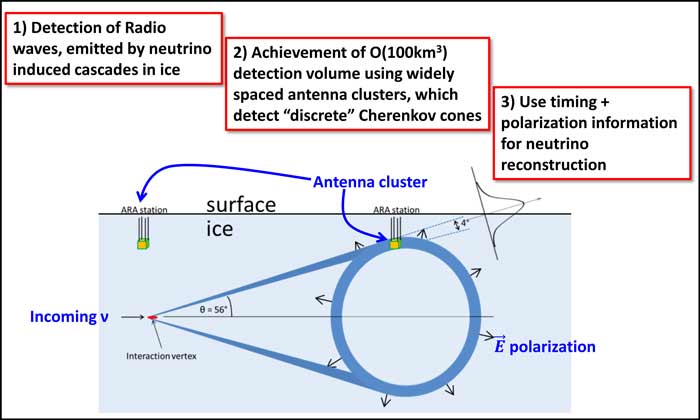 A schematic diagram of how ARA detects and analyzes neutrino interactions (1) Briefly, ARA uses radio antennas to detect nanosecond-long radio pulses from high-energy neutrinos. These are believed to be produced by ultra-high-energy cosmic rays, perhaps emanating from supermassive black holes in nearby active galactic nuclei. ARA uses the Askaryan effect, whereby charged particles can similarly emit radio or microwave radiation. By comparison, IceCube utilizes the Cherenkov effect, where charged particles moving faster than the phase velocity of light can emit light radiation. Because ARA looks for high-energy particles, a larger array is required than that of IceCube. The technical details are available in the references below. The drilling equipment for ARA1 was basically the same as what was used in 2010-11: | ||
 The ARA work area looking from the ICL balcony. It is a much smaller footprint than the IceCube drill setup (6). |
||
 another look at the business end of the drill...this photo is actually from the 2010-11 testing (8). |
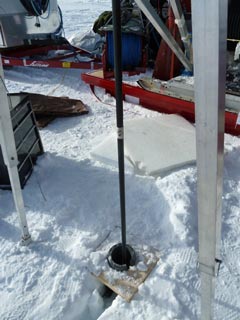 A closeup of one of the ARA1 200m holes (7). | |
|
References (the numbers refer to the specific sources of the photos/figures; all of these references were also used in the development of the text on this page): (1) "ARA: The Askaryan Radio Array," a report presented by Thomas Meures on 20 June 2012 at the Acoustic and Radio EeV Neutrino Detection Activities (ARENA 2012) conference in Erlangen, Germany. (2) IceCube news page; photo by Laurel Norris. (3) Michael C. B. Ashley; the photo appears and is described in his diary here. (4) "ARA: The Askaryan Radio Array," a report presented by Kara Hoffman, University of Maryland, presented at a 4-5 April 2011 conference "Astrophysics from the South Pole: Status and Future Prospects" in Washington, DC. (5) "Radio detection of UHE (ultra-high-energy) cosmic neutrinos, a report presented by David Seckel (University of Delaware) at the Neutrino Oscillation Workshop, Conca Specchiulla (Otranto, Lecce, Italy), 14 September 2012. (6) Photos provided by Mike DuVernois. (7) Blog by Dr. Mike DuVernois. (8) The "photos" section of the Askaryan Radio Array UW project web site. (9) ARA-AARPS (ARA Autonomous Renewable Power Stations) Preparations and On-Ice Tasks (for 2011-12) by Ken Ratzlaff, Dave Besson, and Rob Young; Instrumentation Design Laboratory, The University of Kansas. Elsewhere: the the unusual ship offload at McMurdo. | ||
